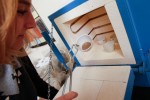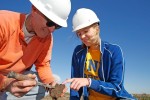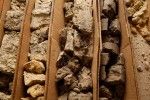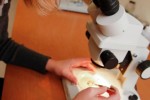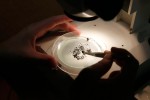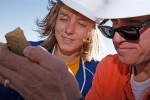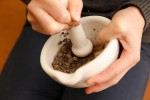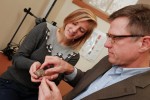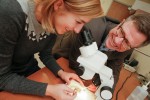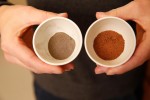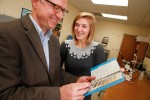
By SARA GIBONEY
UNK Communications
KEARNEY – A discovery by University of Nebraska at Kearney geography professor Jeremy Dillon and undergraduate student Ashley Larsen will determine the landscape and climate of Kearney nearly 24,000 years ago.
While working on STATEMAP, a project funded by the United States Geological Survey producing geological maps, Dillon needed to drill a test hole to better understand the surface area near Kearney’s Cherry Avenue.

He asked Larsen, a senior geography major from Lexington, to help.
“We encountered something that we absolutely did not expect,” Dillon said.
Twenty-seven feet below the ground’s surface, they found organic rich, dark sediment in the core samples.
“I was excited because I wasn’t expecting to see something like this,” he said. “When we got it back to the lab, we looked at it more closely and realized that there were very small plant fragments.”
Samples were also sent to Dillon’s colleague, Richard Baker, a retired professor of biology at the University of Iowa who is an expert in the field of plant macrofossils. Baker found that the samples contained spruce needles and wood fragments.
Dillon submitted samples of the spruce needles to a lab for radiocarbon dating, and the ages indicated that the needles were deposited 22,500 to 23,600 years ago.
Larsen was studying the samples through the Summer Student Research Program. Dillon was her mentor, and she received training from Baker and United States Geological Survey in Denver to learn how to conduct macrofossil identification.
As Larsen processed the samples with Dillon at UNK, they found seeds from three wetland plants, insect fragments and one complete Rove beetle.
The macrofossils indicate that there was a wetland and spruce forest in Kearney during that time period, Dillon said. Spruce trees are not native to Nebraska today.
“Being involved in this project has been incredible,” Larsen said. “I started the project when I first decided that I wanted to pursue soils, and now it’s what I want to study in grad school. It’s been invaluable.”
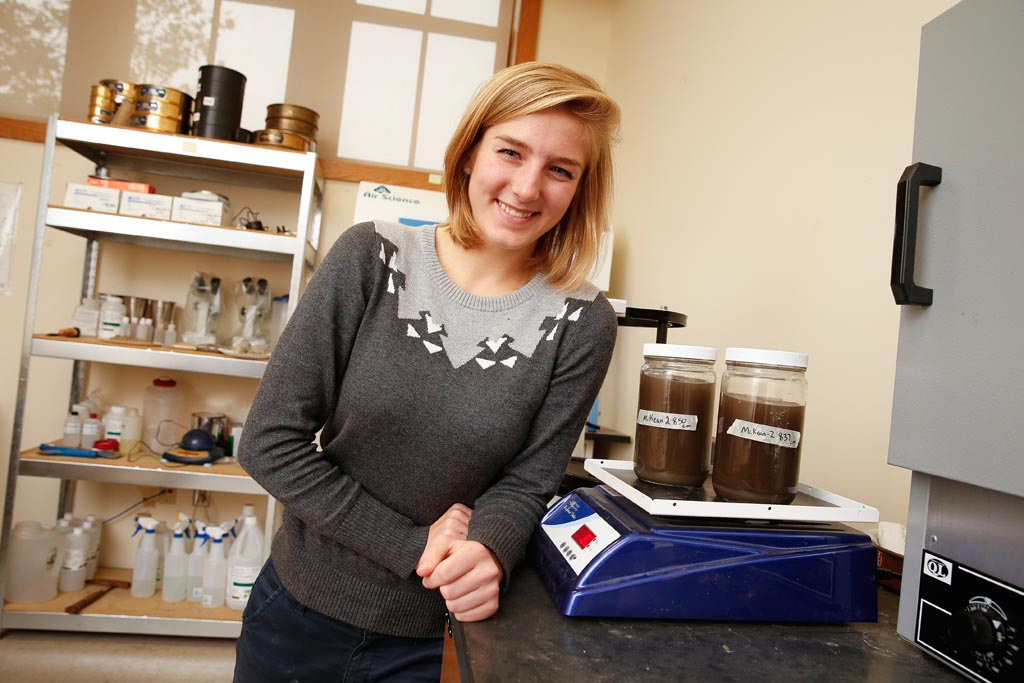
The Summer Student Research Program allows undergraduate students to conduct independent research under the guidance of a faculty mentor.
“Undergraduate research gives you hands-on experiences that most undergraduate students at larger universities do not get. It gives you a leg up when you’re applying for a job or for a graduate program,” Dillon said.
“It makes learning come alive. There’s such a huge difference between reading something in a textbook or a journal article and actually doing it yourself in the field or in the laboratory, and actually seeing it and experiencing it.”
For Larsen, her undergraduate research meant being a part of making a new discovery.
“This is truly a discovery,” Dillon said. “We had no idea it was there, and this is the first time in the central Platte River Valley that something like this has been encountered and documented.
“There are still questions. But when you can get actual plant macrofossils like this, you can really study in detail what the environment looked like at that time. You can reconstruct the climate and the landscape of that time period.”
Dillon and Larsen’s discovery means the Platte Valley bottom was 27 feet deeper than it is today. Over the last 23,000 years, the valley has been covered by sediments from the river and sediments blown in by the wind.
“It’s fun to look out over the Platte River Valley or look at Kearney and imagine this area once looking like Canada. Imagine a spruce forest covering our landscape. It would have looked very different than it looks today. That’s what’s exciting,” Dillon said.
“This is also giving us a chance to really understand how active and dynamic the Platte River has been over the past 24,000 years.”
Dillon and Larsen will continue to obtain more data to determine the true landscape of Kearney nearly 24,000 years ago. They will drill more test holes to determine the extent of the deposit. Dillon hopes to find pollen in the sediments, which will allow him to get a better idea of what the vegetation and climate was like during that time.
Larsen and Dillon will present their findings at a Geological Society of America meeting in May. They will also submit a manuscript for a journal article.
“We aren’t finished yet. Our answer to what this area looked like 23,000 years ago may change a bit as we get more and more data,” Dillon said. “But so far, we have strong evidence to suggest that there was a wetland along Cherry Avenue surrounded by spruce forest. It would have looked similar to northern Minnesota or Canada.”
Dillon has worked at UNK since 2002. His area of research is Quaternary geology and soils.
-30-


